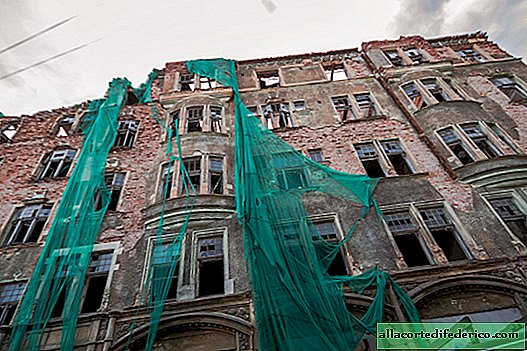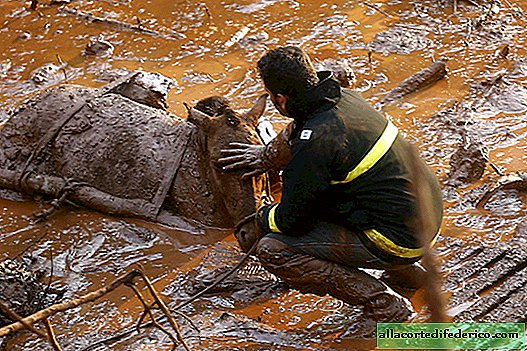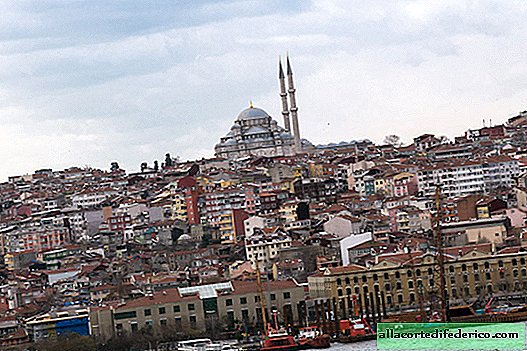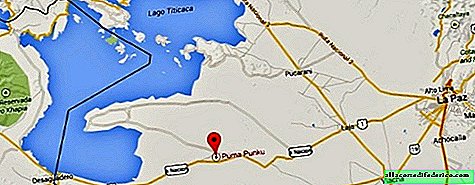How the Hermitage was saved during the Second World War: the museum was ready for evacuation back in 1939
The Great Patriotic War was a terrible test for the entire Soviet Union. Hard work was carried out on the battlefields and in the rear. Few people know about this, but from the very first days of the war, despite the complexity of the situation in which the state found itself, the museums and exhibition galleries of the country were evacuated. We would like to talk about the incredible efforts to save the treasures of the Hermitage during the siege of Leningrad.

The Hermitage was the largest collection of art and historical values not only of the Soviet Union, but also of Europe. According to the memoirs of B. B. Piotrovsky, who was the director of the Hermitage from 1964 to 1990, preparations for the evacuation of the museum were made long before June 22, 1941. Back in 1939, corresponding orders were issued on preparing the Hermitage fund for evacuation. For most of the exhibits, individual boxes were made, everything was signed and numbered. This fact, according to experts, played a decisive role in the successful evacuation of most exhibits of the Hermitage.
This seems unbelievable, but judging by this information, the country's leadership was aware of the impending war and had taken care of preserving the cultural heritage in advance. There was no panic and chaos: on the very first day of the war, June 22, all the Hermitage staff were called to the museum and work began on preparing the values for shipment. The paintings were removed from the walls and packed in special boxes, large canvases were removed from the subframes and rolled onto the shafts, several each. All this was done as accurately and carefully as possible, despite the importance and urgency that was inherent in the situation.

In those harsh years, the director of the Hermitage was Academician I.A. Orbeli, who directed all the work on the evacuation of artistic property. In addition to the museum staff, hundreds of Leningraders who loved the Hermitage helped prepare exhibits for shipment. According to the memoirs of I.A. Orbeli, “... everyone took part in the packaging, spending no more than an hour a day on food and rest ... These people had to be forced to eat and rest by order. The Hermitage was more expensive than their strength and health”.

As a result of dedicated work, on June 30, 1941, the first train with the values of the Hermitage left Leningrad, and on July 20 a second train was sent. In total, about 1 million 200 thousand of the most valuable exhibits were evacuated from approximately 2 million storage units. All information about the evacuation was strictly classified. Even the railroad workers who were on the train did not know that they were being transported in the cars. They could only guess that it was something valuable: one of the wagons was armored, and the entire train was protected from anti-aircraft bombing by anti-aircraft guns placed on platforms.

Evacuated values were transported to the Urals - to Sverdlovsk (now Yekaterinburg). It is interesting that in Sverdlovsk there was not such a large room in which all the values of the Hermitage would fit, so they were distributed over three rooms. Most of the collection was located in the Sverdlovsk art gallery, the remaining storage places were the Polish Catholic Church of the Conception of St. Anne and the Ipatiev House.
According to the employees of the Sverdlovsk art gallery, the building was completely filled with boxes and boxes, from storage to the ceiling of the second floor. Gallery during the war years, of course, did not work. Moreover, a safe was built in one of the halls: the windows and doors were laid with bricks, and the only entrance was reinforced with steel bars. The most valuable exhibits of the Hermitage were stored in this hall. Information about where in Sverdlovsk there are valuables exported from the Hermitage was strictly confidential. The country's leadership was afraid that the Nazis might bomb the storehouse or send a sabotage group to the city in order to explode values.

Unfortunately, they did not manage to take out the third echelon with exhibits. Leningrad was blocked by the Nazis on September 8, 1941. All that remained was lowered into the basement - bomb shelters. But even during the war, the Hermitage did not stop its work: exhibitions from the remaining exhibits were held, employees gave visiting lectures. In summer, in fine weather, furniture was taken out of storage and brought out onto the street for drying. The vaults were damp, and antique furnishings suffered from humid air. To prevent works of art from damaging basement mice and rats, Hermitage staff sheltered dozens of cats, which also contributed to the salvation of cultural property. By the way, cats are in the service of the museum today.

In gratitude for saving part of the Hermitage’s collection, the Sverdlovsk Picture Gallery received over 200 paintings, rare books, a collection of glass and porcelain, as well as several sculptures and pieces of furniture. Today the gallery has a different name: Yekaterinburg Museum of Fine Arts. And in memory of those difficult times of our history, they plan to create a cultural and educational center "Hermitage-Ural" in Yekaterinburg.

















